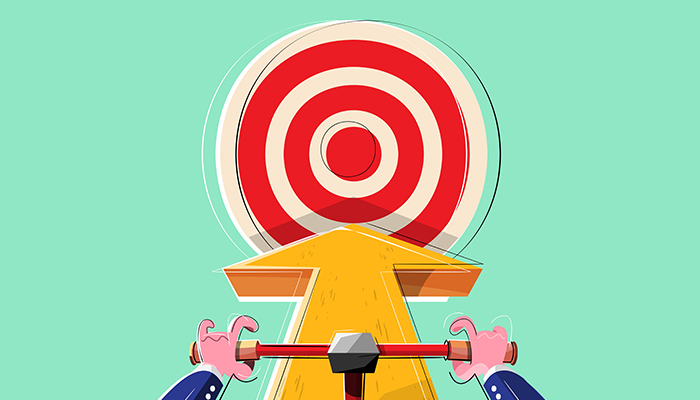Sales process - Modern tips and techniques in the B2B domain
Today's buyers have access to all of the information they require to make informed purchasing decisions. The internet has spawned knowledgeable modern buyers and altered the way we shop and conduct business. To motivate and sell to these well-informed decision-makers, you'll need a B2B sales approach that combines marketing and sales skills.
Today's purchasers have complete control over the buyer/seller relationship, and they don't want to be distracted, pitched, or marketed. Prospects want value-added sales encounters that give them information and assist them in making purchasing decisions on their terms. If a company does not provide a positive purchase experience, customers will move on to another one that does. It's time to throw out the old sales procedure and start selling the way today's customers buy. It's time for a B2B sales procedure that focuses on the buyer. This blog is a tool for developing a modern B2B sales process.
What is the difference between a Legacy Sales Process and a Modern Sales Process?
Let's go over a few key aspects before we start constructing a buyer-centric B2B sales process.
What is meant by a Sales Process?
A sales process is the sequence of events and actions that must occur for a potential buyer to purchase a product or service. Sales efforts are organized into several stages or phases that allow for tactical planning, tracking, and forecasting. These stages are then linked to your sales operations, which include nurturing leads to become clients.

What is meant by a Legacy Sales Process?
“Legacy” sales tactics are transactionally focused and business-centric, relying on scalability, consistent sales pitches, and sheer volume to create income. These methods encourage cheating the system, slogging through repetitive conversations carelessly, and pressing prospects to buy. Salespeople in "legacy" businesses become transactional facilitators who don't do anything to nurture prospects, advise decisions, or become trusted partners.
If you're in the following situations, you may have a legacy sales process:
- More concerned with the number of encounters than the quality of those interactions Inability to identify and qualify leads that are a suitable fit
- To contact leads, just utilize email and phone calls.
- Not providing salespeople with the materials they need to educate customers about options other than your own
- Costs of acquisition and customer lifetime value are not tracked.
- Creating the same sales interactions with each prospect Price competition
- Without face-to-face encounters, it's difficult to reach revenue expectations.


What does it mean to have a Modern Sales Process?
A prospect-centric framework rather than a business-centric technique is used in “modern” sales approaches. A contemporary sales process equips salespeople with the tools, resources, and freedoms they need to personalize interactions to a prospect's specific needs, allowing them to transform into educators who deliver useful insights at every buyer engagement. Salespeople in these situations concentrate on discovering excellent fit prospects, sharing their knowledge, and assisting potential customers through the buying process. Modern sales techniques simplify the sales process and allow you to reach prospects on their terms across many platforms.
Don't be siloed but celebrate your customer's success
The enemy of customer-centricity is the silonomics of any organization. When the efforts are equally invested, the output should also be celebrated. When customers' expectations are exceeded the employees are rewarded. With every customer’s onboarding, acquisition, retention, and conversion there should be a reason to celebrate, thereby, manifesting a customer-centricity in every fabric of your organisational culture.
- Increased conversion rates
- Sales cycles are shorter.
- Customer engagement is higher.
- Customer lifetime value has increased.
- Acquisition costs are lower.

How to create an attractive B2B Sales Process for Prospects?
Every salesperson understands that selling is an art form, and has undoubtedly reminded you of this multiple times. Meeting the demands of each prospect and overcoming objections is one of the few business processes that cannot be broken down into steps. A framework that allows salespeople to innovate, personalize interactions, manage various stakeholders, and anticipate buyer needs is required for an effective B2B sales process. The ability to adapt does not necessitate a wild west-style sales technique. Rules, techniques for monitoring progress, and the ability to forecast are all required. A sales process framework establishes a sales environment that has the correct balance of predictability and measurement. Last but not least. Each sales process is tailored to the company, industry, and clients it serves. As a result, there is no one-size-fits-all solution. Sorry. Having said that, we can give you a "recipe" for creating your own unique sales structure.
Always keep in mind that sales are about people. It should come as no surprise that all exceptional B2B sales processes begin with a thorough understanding of your target market. Buyer personas are a great way to identify prospects and create strategies around them. You can develop messages, build playbooks, predict needs, and overcome objections using a persona for each of your key buyers and stakeholders. Furthermore, salespeople may rapidly identify leads who aren't a good fit and focus their efforts on those who are more likely to buy.
Your sales staff will be able to screen prospects for compatibility using a "Prospect Fit Matrix" before engaging them in lengthy and time-consuming sales activities. Is the company you're dealing with in the right industry, has the right revenue targets, has the right number of employees, and has the right business model? If not, you're likely squandering resources on a deal that will be difficult to close—and, if won, would drain resources. Know who your target market is and concentrate on them. It's where your money is most efficient.
Your sales process will influence how your team sells and what role they play in the buyer's journey. The conventional "pushy" salesperson has limited patience with today's buyers. Instead, your sales force will have to reinvent themselves as solution providers, consultants, educators, or challengers. Within a single contract, your teams may utilize a range of sales approaches and methods at different stages and with different stakeholders. It's critical to figure out which sales approaches produce the desired sales experience and motivate buyers. When salespeople understand how to approach a prospect and adjust their approaches accordingly, they create a pleasurable and compelling purchase experience. Inbound and consultative sales methods are two of our favorites, and we created our own sales strategy around them.
People go through a set of mental processes known as the buyer's journey while making a purchase decision. The buyer's journey is divided into three stages: awareness, consideration, and decision. Salespeople must have a thorough awareness of the buyer's journey to anticipate customer wants and address objections. A successful B2B sales process shortens sales cycles and drives purchases by being able to anticipate prospect demands at each stage of the buyer's journey.

Conclusion
A successful B2B sales strategy tries to add value and motivate buyers on their terms. If your sales process is inefficient, focuses on quantity, and encourages selling, you're likely to fall behind competitors who have invested time and effort into creating streamlined and delightful sales experiences.


Leave a Reply